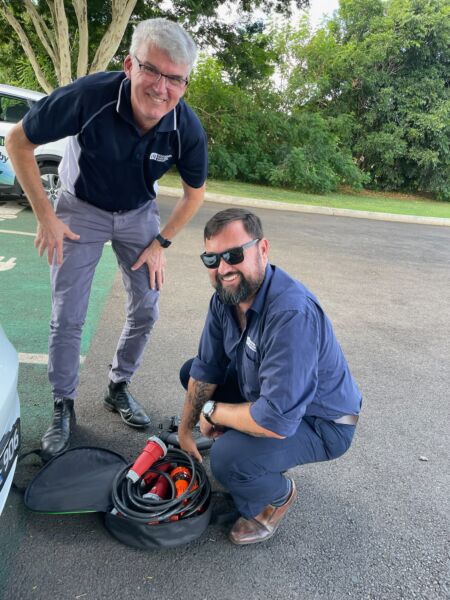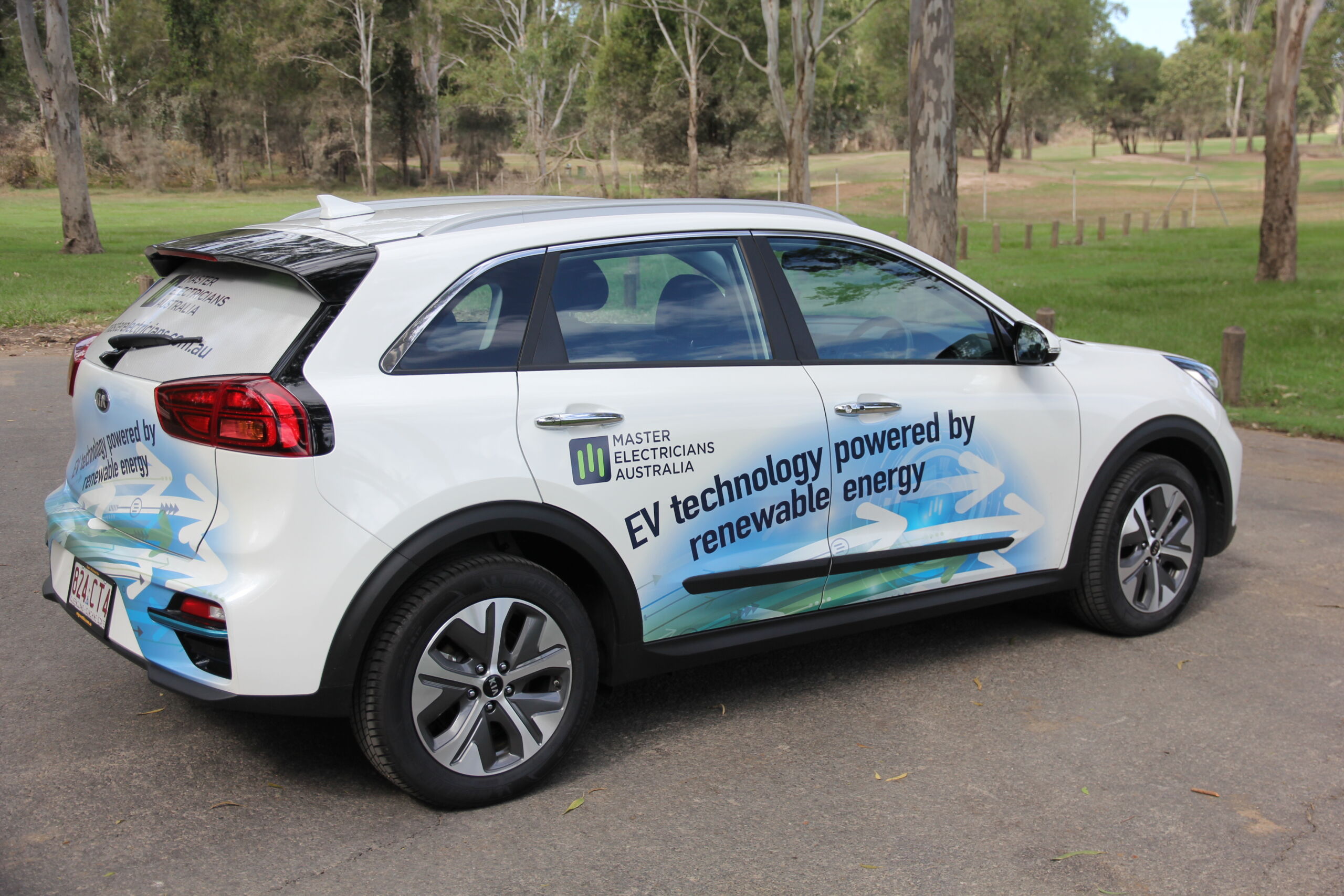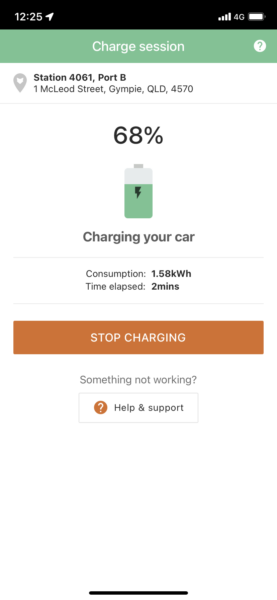We took an EV on a 850km roadtrip, this is what we learned
 Electric vehicles offer huge running cost benefits.
Electric vehicles offer huge running cost benefits.
But significant challenges in the mainstream adoption of EVs remain. They are more expensive to buy, take a significant amount of time to charge, and the infrastructure for them is still being developed.
But the construction of charging networks as widespread as service stations represents a huge opportunity for electrical contractors.
As part of MEA CEO Malcolm Richards’ ongoing Industry Briefing Sessions, he and Field Support Advisor Matthew Kummerow drove 853km in the MEA Kia Niro EV from Brisbane to Bundaberg, via Hervey Bay, Noosa, and back.
Here is what they found.
Running costs
How would you like to cut your vehicle’s running cost by four? That is what MEA found on our first lengthy road trip using the new MEA electric vehicle (EV).
To drive that distance MEA’s Kia Niro EV used 132kWh. The road trip started with a full charge at the MEA Brisbane office, then charging on the route with public EV chargers (30c/kWh) and returning to full charge on return to the MEA Brisbane office utilising the excess solar capacity (9c/kWh), at a total cost of $28.27. To power an equivalent internal combustion engine vehicle would have cost $116.85.
Charging time
The flip side of the cheaper running cost is the amount of time it took to charge the EV. The car needed to stop three times along the way to charge up, for a total of two hours and twenty-five minutes using a 50kW DC charger.
Current high-speed chargers (50 kW) did not charge very fast, but upcoming 350kW versions may change that.
 Understand charging
Understand charging
Charging a battery is different than filling a car up with petrol. Many chargers will show a charging time based on a battery charging to 80 per cent, rather than 100 per cent. That is due to a battery’s internal resistance as the charge increases.
Most chargers will charge at top speed until the battery reaches 80 per cent. It will then slow down due to decreased efficiency and to prevent the battery from being damaged by overheating or overcharging.
Plugging your car into a standard power point at home is convenient, but slow. An AC fast charger can increase charging power from 2.0kW to 7.2kW or even 22kW depending on the capacity of the individual car to accept that charge.
As mentioned above, 50kW fast chargers are the most common high-speed chargers available on the road. They can still take a significant period to charge an EV. This should change as high capacity 350kW DC chargers become available.
Charging plugs
One of the most confusing parts of EVs is the varying charging plugs. Different vehicles and chargers can require different plugs. And as most chargers are socketed (like a power point) they do not have their own cable and you need to bring your own.
- The Mennekes plug, also called the IEC 62196 or Type 2 AC plug, is the most common Australian plug for AC charging, used by European and American manufacturers.
- The Tesla plug is a variation on the Mennekes plug. Tesla’s can use a standard Menneke but their proprietary lock prevents other brands from using their charging network.
- The CHAdeMO connector is used by many Japanese manufacturers. While it is DC-only, it is capable of bi-directional charging and can feed energy to the grid or supply to a home.
- The Type 1 J Plug is common in America but mostly only used in older cars in the Australian market.
Plan ahead
A road trip using an EV requires a change in thinking. With charging infrastructure still limited you can’t rely on EV chargers being as prevalent as service stations.
It means you will need to plan ahead. What is the range of your car and where are the available EV chargers located along your route? Can you find accommodation on the trip that has EV charging facilities?
A growing number of shopping centres now have EV charging facilities. Take the time to stop for lunch and charge up instead of eating in the car.
The PlugShare application has an extensive list of EV charger locations, what plugs they use, and any other restrictions.
 Use the apps
Use the apps
Alongside projects like PlugShare most EV charging networks are run through apps. Some of the most common charging networks currently include:
As well as many more.
The apps for these networks help you track find charging stations, activate the stations, and securely pay.
One current issue is that each network currently requires you to have an account in their app. You can’t use the Chargefox app to activate and pay at an Evie Networks station or vice versa.
Opportunities for electrical contractors
A lack of EV charging infrastructure is still the biggest obstacle towards the electric future. But that represents a huge opportunity for electrical contractors.
As EVs become more popular and affordable, charges will be needed in public spaces, service stations, shopping centres, commercial parking lots, businesses, offices, and homes. Every one of those charges need to be installed by an electrical contractor.
This represents one of the biggest emerging markets imaginable for electricians. Powering vehicles is an entire market that has previously relied on other trades. That means hundreds of thousands of potential EV chargers, plus future work as the industry continues to evolve and move towards an electric future.
Like solar PV panels and, more recently, battery systems, car charging will become a major sector for many sparkies. In fact, as bi-directional chargers become more common EV charging will integrate with homes, home batteries, solar systems and even our workplaces.
It may not be a market you are currently working in, but it could be a profitable part of your business in the coming years.
Do you have questions about electric vehicle chargers? Master Electricians have unlimited access to the MEA Technical Hotline. Speak direct to the experts. Phone 1300 889 198.
MORE FROM MEA